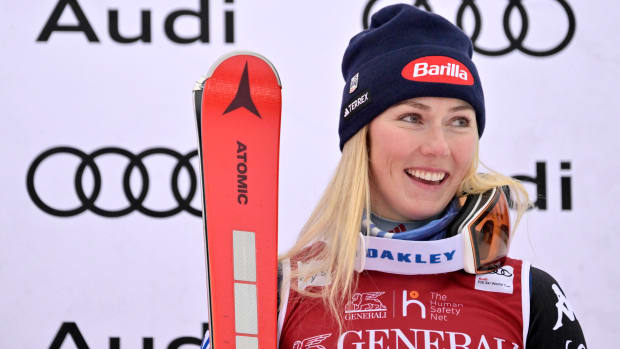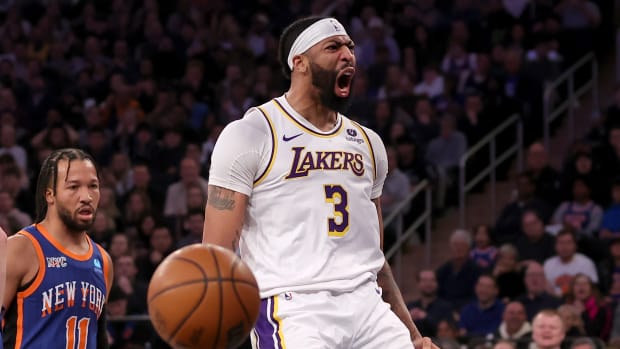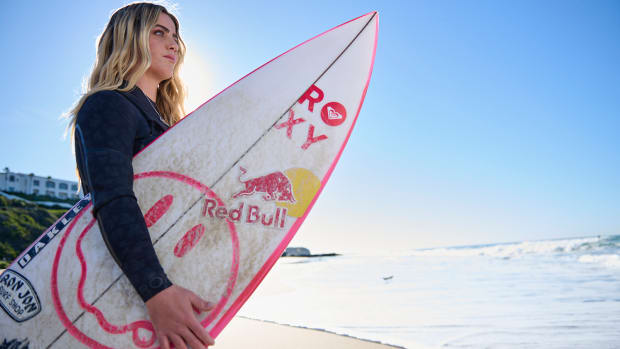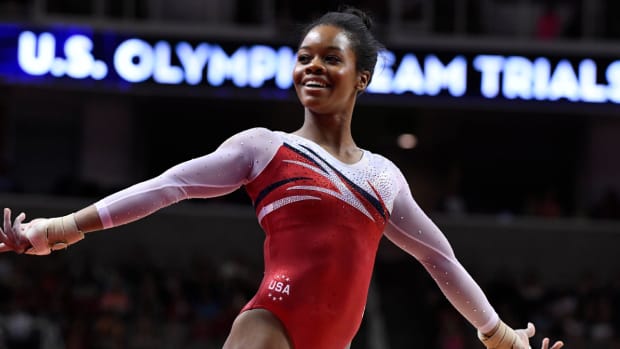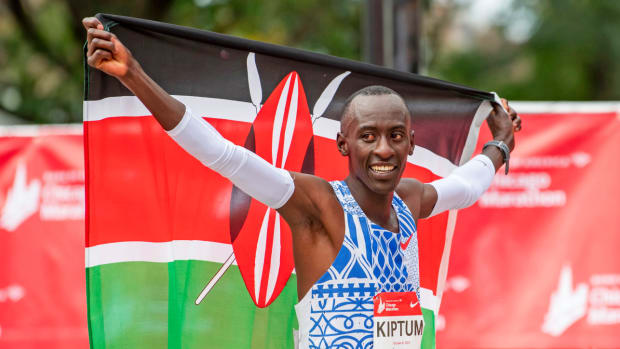The U.S. Swim Team's Youth Movement Will Be on Full Display in Tokyo
OMAHA, Neb. — The Tik Tok Generation is going to Tokyo. You could see the youth movement coming in American swimming, but not to this extent—and now it presents a tremendous challenge for leaders of the U.S. Olympic swim team.
Coach Greg Meehan heads an American women’s delegation that includes a whopping 10 teenagers among the 26 roster spots: one 15-year-old, two age 16, a 17-year-old from Alaska, two at 18 and four at 19. Most of those 10 have never gone away to college. Some have never left the country, been on the American international team or been on a major swimming trip without their parents. Forgive Meehan if he occasionally feels like he’s running a day care and not a swim team going halfway around the world on a high-stakes business trip amid adverse lockdown conditions.
These teenagers (and their older teammates) will leave the contiguous 48 states for a Hawaii training camp next week. From there, it’s on to Japan. It can be a long, lonely grind—and that’s in a non-pandemic situation. They’ll be away from their families for more than a month, with foreign fans forbidden from attending the Games. FaceTime could be the lifeline.
“It’s a really young team,” observed Katie Ledecky, the 24-year-old star now heading to her third Olympics. “So I hope us older swimmers can show them the ropes and create that family environment.”
Ledecky said that in a press conference Saturday night while sharing the dais with 15-year-old Katie Grimes, who finished second in the 800-meter freestyle. If anything illustrated the sudden arrival of the next generation of American women swimmers, it was listening to Grimes’ endearing attempt to process her Olympic berth alongside the greatest freestyler in history.
“I used to think it was cool that we had the same first name,” Grimes said. “Now we're going to be on the team together. … I don't know, I'm just -- I'm speechless right now. I can't even begin to explain how excited I am. Oh gosh, yeah.”
This is yet another side effect of the pandemic on American sporting life: lengthening the window between Olympics to five years killed some dreams and gave life to others. The majority of these 10 teens would not have made the U.S. team in 2020; they simply weren’t ready yet. Given an extra year to grow and mature, they seized the moment.
In 2019, the last time there was a full season of competition, Bella Sims did not rank in the American top 100 in the 200 freestyle. Today, the 16-year-old is going to Tokyo as a relay swimmer in that event. Lydia Jacoby was the 17th-fastest American in the 100 breaststroke two years ago. Today, she is the first Alaskan swimmer to make the Olympics, finishing second in that event to Lilly King.
There is Grimes, now 21 seconds faster in the 800 free than she was in 2019, crashing an event she couldn’t have dreamed of making in 2020. And there is 18-year-old backstroker Phoebe Bacon, who worked to diversify from the 100 to the 200 and out-touched world-record holder Regan Smith for the second spot in the longer event Saturday night.
“I don't know where I would have placed a year ago,” Bacon said. “I would say this year definitely helped.”
And then there are those that it hurt. The youth movement was, in some cases, created by the vulnerability of older Olympians trying to maintain their position through the extra year. Kelsi Dahlia, age 26, made the team in 2016 in the 100 butterfly but finished behind 18-year-old Torri Huske and 16-year-old Claire Curzan this year. Melanie Margalis, age 29, was the top seed in the 400 individual medley but gave way to 19-year-old Emma Weyant in the final meters—then missed out in the 200 IM which she swam in Rio de Janeiro in 2016. Leah Smith, age 26 (and for many years the Robin to Ledecky’s batman in distance freestyle), might have overscheduled herself in this meet and couldn’t keep pace with some of the young guns. Olivia Smoliga, age 26, scrambled to grab a freestyle relay spot but couldn’t beat some younger competition in the individual backstroke events.
There were other post-college American women who were left out in brutal fashion: Madison Cox, age 26, had the top time in the world in the 200 IM coming into this meet and then finished third in the event, missing Tokyo by .02 seconds. Kathleen Baker, age 24 and a Rio Olympian, suffered a broken foot in early May and tried to tough it out, but was swept aside by younger competition in the backstrokes and 200 IM.
Meehan and the American staff will be massively grateful to have 31-year-old Allison Schmitt on the Olympic team for the fourth time. Her leadership presence was valuable in Rio de Janeiro five years ago, and it will be all the more important in Tokyo given the inexperience on the roster. Going into the strangest of all Olympics—endless COVID-19 protocols, strict inhibition of free time, little or no fans, virtually no interaction with anyone outside the Olympic Village—this could be precisely the wrong meet for a young team.
The American men’s team was far less affected by the one-year delay of the Games, but there is some of the same dynamic to be found there. Hunter Armstrong, 20 years old, was virtually anonymous until this spring. After finishing 13th at NCAA championships for Ohio State in the 100 backstroke in March, he finished second at Olympic Trials—edging out NCAA champion Shaine Casas to punch his Tokyo ticket. Also among those beaten in that 100 back final was 36-year-old Matt Grevers, trying for his third Olympic bid.
Florida freestylers Kieran Smith and Bobby Finke, both 21, might have been ready to pop in 2020. They definitely were ready in ’21. That came at the expense of Zane Grothe, age 29, who was one of the linchpins of American distance freestyle in 2018-19. He failed to even make the finals in Omaha in the 400 and 800.
The biggest blow to the men’s team was the loss of Nathan Adrian, 32, who missed his customary spot as a relay star after finishing 13th in the 100 freestyle semifinals. The three-time Olympian then missed the team altogether on Sunday night, finishing third in the 50 free. That will leave a large leadership chasm for the American men to overcome. "I'm not ready for a team without Nathan," American male star Caeleb Dressel said Sunday night. "I told him that."
Women’s swimming is especially capricious, prone to youngsters flashing onto the scene and short shelf lives. At the 2008 Olympic Trials, 19-year-old Katie Hoff was the female star; she did not make a subsequent Olympic team. In 2012 Missy Franklin was a 17-year-old phenom; by ’16 she barely made the team. For whatever reason, it’s harder to stay on top for a sustained period on the women’s side.
Even Ledecky, now in her ninth year of distance dominance, is chasing her 19-year-old self—her times at these Olympic Trials are slower across the board compared to what she posted here in 2016. Twenty-year-old Australian Ariarne Titmus will be favored to beat Ledecky in the shorter two of her four individual races.
But unlike so many of her new teammates, Ledecky knows her way around the Olympic block. As vital as she will be in the pool next month, she could be equally important in helping a frightfully young American team grow up in a hurry.
More Olympics Coverage:
• How the L.A. '84 Olympics Changed Everything
• The Art and Science of Swimmers Shaving Their Entire Bodies
• Sha'Carri Richardson Cruises to Win Women's 100m Olympic Trials Title

